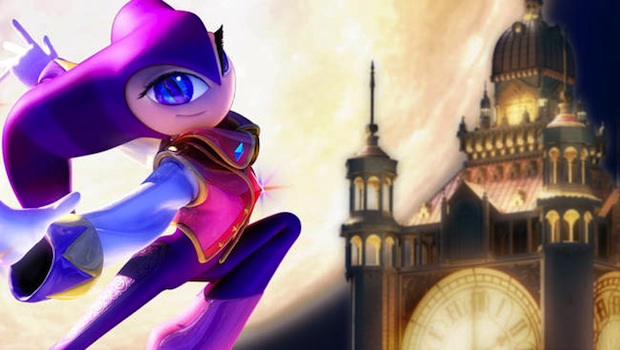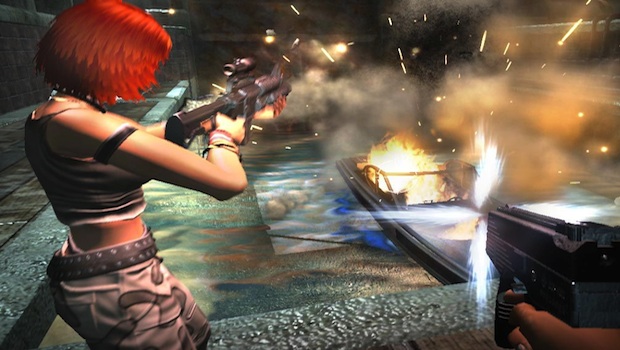See if you remember gaming's most forgettable sequels
These follow-ups failed to leave a mark
Okamiden

Oka-what? Oka-who? Exactly. Even fans of similarly ignored Okami, upon which Okamiden is based, aren't all aware this spin-off for the DS ever existed. Developed by Mobile Game and Studio Inc., the title took place nine months after Okami and starred a young pup named Chibiterasu, who was later revealed to be the celestial son of Amaterasu, the sun goddess from the original. Like Okami, players guided Chibiterasu through a land teeming with secrets, treasures, and charms while solving puzzles and killing foes with the 'Celestial Brush'; a mechanic which required players to draw symbols for various effects. The game's drawing mechanic felt at home on the DS, and the luscious ukiyo-e art style was just as much a treat on the smallscreen as it was on the PS2.
Why it was forgotten: As much as we complain about lack of innovation in gaming, it's also true that sometimes games suffer because they stray too far from the pack. Like Okami, Okamiden employed very unique visuals and a core drawing gameplay that, while fun to play, didn't appeal to more straightforward adventurers. Okamiden was also developed by the folks associated with the Wii port of Okami, with very loose connections to Okami's original creators at Clover Studio, who were forced to close their doors after Okami failed to perform. In short: there's no clear reason why Okamiden flew under the radar, but it's a shame the series has never reached the level of success it rightly deserves.
NiGHTS: Journey of Dreams

The original NiGHTS into Dreams debuted in 1996 for the Sega Saturn. If that year stirs up warm and fuzzy memories, it's because 1996 also saw the release of a little platformer called Super Mario 64; a game that all but overshadowed everything else on retail shelves, including Sonic Team's flying adventure. Those who got around to piloting Nights discovered an innovative and imaginative platformer deserving of its own praise. As such, NiGHTS became something of a cult hit in the decade that followed, motivating Sonic Team to try again in 2007 with the Wii exclusive, NiGHTS: Journey of Dreams. Like its predecessor, the sequel found players gliding through the dream-like worlds of Nightopia and Nightmare saving innocent dreamers from Wizeman the Wicked who - as the name implies - wasn't much of a stand up guy.
Why it was forgotten: Critics praised NiGHTS: Journey of Dreams for recapturing the charm and visual flare of the original, but that's generally where the comparisons (and compliments) ended. Where NiGHTS was a smooth and ethereal experience for Sega Saturn, NiGHTS: Journey of Dreams was a clunky and average shooter muddied by dodgy motion controls and a general sense of meh. What's more, Sonic Team's sequel skewed to a younger crowd, leaving older fans to wish for the good ole days.
Panzer Dragoon Orta

The fifth game in the Panzer Dragoon series, Orta swooped in for Xbox in 2002 after a four-year hiatus, bringing some of its original creators from Team Andromeda along for the ride as members of Smilebit. The on-rails shooter picked up decades after the conclusion of 1998's Panzer Dragoon Saga, and let players take control of a young dragonrider named Orta as she works to thwart the newly resurrected Empire and its race of mutant Dragonmares. The game was told in 10 episodic chunks, and included a rating system that encouraged players to try again for higher episode scores.
Why it was forgotten: Panzer Dragoon Orta wasn't a bad game by any means, but it was a step back. Where Panzer Dragoon Saga for the Sega Saturn infused the series with rich RPG elements, Orta scaled those ambitions back for an old-school, on-rails experience. This retro feel, combined with a short runtime and punishing difficulty level, placed Panzer Dragoon Orta squarely in the devout fans demographic.
Perfect Dark Zero

When Rare debuted Perfect Dark for the N64 in 2000, it was billed as the spiritual successor to the studio's 1997 FPS masterpiece, GoldenEye 007. Granted, Perfect Dark's setting was far more futuristic and Bond had been swapped out for a bounty hunter named Joanna Dark, but its tight FPS mechanics and polished local multiplayer put it squarely within range of its acclaimed inspiration. Add in the fact it was also directed by GoldenEye 007 alumnus Martin Hollis and it's easy to see why it went on to woo critics and gamers alike. Five years later, Rare attempted to rekindle the love for its I Can't Believe It's Not GoldenEye franchise in 2005's Perfect Dark Zero.
Weekly digests, tales from the communities you love, and more
Why it was forgotten: Making the Xbox 360 launch deadline proved taxing for the relatively small development team. Features were cut, elements were slimmed down, and though Perfect Dark Zero arrived in fair shape for the 360's launch, it did not represent Rare's complete vision. More importantly, it had not evolved. After five years of development, Joanna Dark's once trail-blazing adventures seemed old hat compared to her FPS competitors. As such, reviewers and gamers alike gave it above average reviews, but soon moved on.
Toe Jam and Earl 3: Mission to Earth

As fans of the original 1991 Toe Jam and Earl for the Sega Genesis can attest, Johnson Voorsanger Productions' top-down alien title was ... odd. Awesome? Sure. Radical? Totally. But odd all the same. Regardless, ToeJam and Earl gained a devout following. This led to a memorable sequel, ToeJam & Earl in Panic on Funkatron in 1993; and then the not-so-memorable ToeJam & Earl 3: Mission to Earth. The latter was originally conceived as a remake of the original, but that plan was vetoed when creators Mark Voorsanger and Greg Johnson joined with Visual Concepts to do something new. In the years that followed, ToeJam & Earl 3 bounced between multiple consoles before landing on Xbox in 2002. In addition to a new design, the third game introduced a sassy -alien to the group named Latisha, who helped the boyz in retrieving Sacred Albums of Funk from Earth for Lamont the Funkapotamus. Like we said ... odd.
Why it was forgotten: Vaguely offensive stereotypes aside, the "next generation" just wasn't hip to ToeJam and Earl's groove. The humor didn't fly with reviewers and the melting pot style of gameplay left everything feeling half cooked. Where ToeJam and Earl were considered fresh and wacky by 1990 standards, by 2002 the anamorphic duo were the equivalent of a Vanilla Ice album-great for nostalgia, but not something we'd go blaring in public. Well, maybe some of us.
Twisted Metal 2012

Twisted Metal was the series that made David Jaffe a known name in the video game industry, so it came as little surprise when he announced a sequel to the long-running vehicular combat game from his freshly minted studio, Eat Sleep Play. In development for three years, Twisted Metal began life as a downloadable sequel for the PlayStation Network, but soon became a full release once Sony became impressed with Eat Sleep Play's progress. The game finally released after years of teasing in 2012, and introduced fans to a renewed take on the combat racing series starring the sadistic clown Sweet Tooth, the skull-faced Mr. Grimm, and the unhinged Dollface - all who sought to win one wish from the enigmatic Calypso by winning his tournament.
Why it was forgotten: A new Twisted Metal was a welcome sight on the PS3; but while Eat Sleep Play's 2012 entry revved up some renewed excitement for the franchise, reviewers felt it just didn't do enough to recreate the old car combat glory. While many considered it superior to 2001's Twisted Metal: Black reboot, and meatier than 2005's Twisted Metal: Head-On for the PSP, Twisted Metal's emphasis on solo carnage and its comparatively sparse multiplayer left fans wanting more.
Warhawk

Between SingleTrac's Warhawk in 1995 to LightBox Interactive's Starhawk in 2012, there was this 2007 sequel which sought to remake the original for a new, online world. Developed by Incognito Entertainment, founded by former SingleTrac veterans, 2007's Warhawk ditched its efforts on a single player campaign during production, focusing instead on a completely multiplayer game. The result was one of the PS3's first dedicated multiplayer efforts (and the first title to be made downloadable on PSN and retail), which shipped with six games modes, five maps, and a varying amount of land and air vehicles to help players wage virtual war as either Eucadian or Chermovan forces. Later expansions expanded this selection, but none would see the half-finished single player campaign re-instated.
Why it was forgotten: As a PS3 exclusive released during the infancy of Sony's PlayStation Network, Warhawk's lack of single player content closed it off from a number of PS3 newbies. Online multiplayer was far from as popular as it is today, and those who did log on to join the war were met numerous server and connectivity errors upon launch. And while these were quickly corrected, even favorable reviews couldn't drum up the same level of excitement or online engagement the series once commanded. Now Warhawk is best known for its terrible E3 demo of Sixaxis controls. What a way to go.
Matt Bradford wrote news and features here at GamesRadar+ until 2016. Since then he's gone on to work with the Guinness World Records, acting as writer and researcher for the annual Gamer's Edition series of books, and has worked as an editor, technical writer, and voice actor. Matt is now a freelance journalist and editor, generating copy across a multitude of industries.


